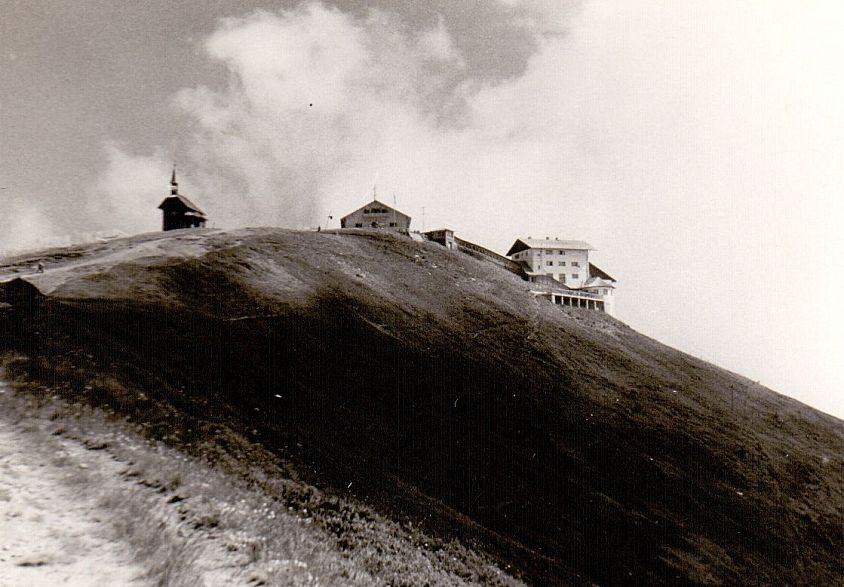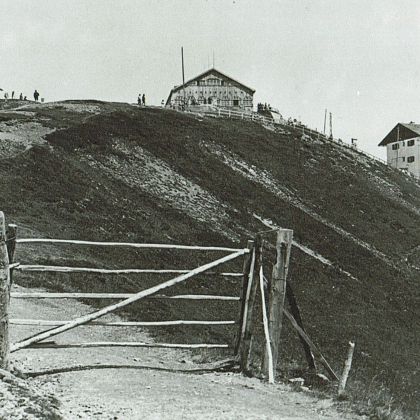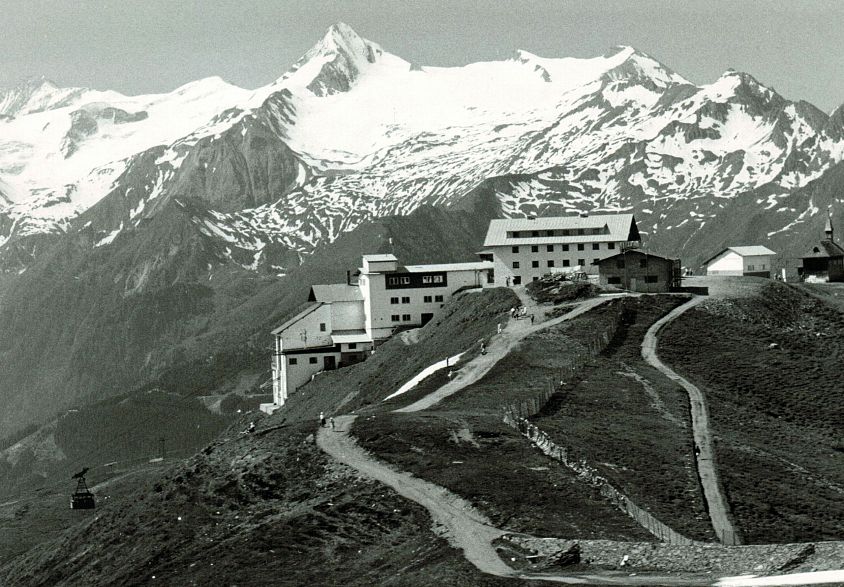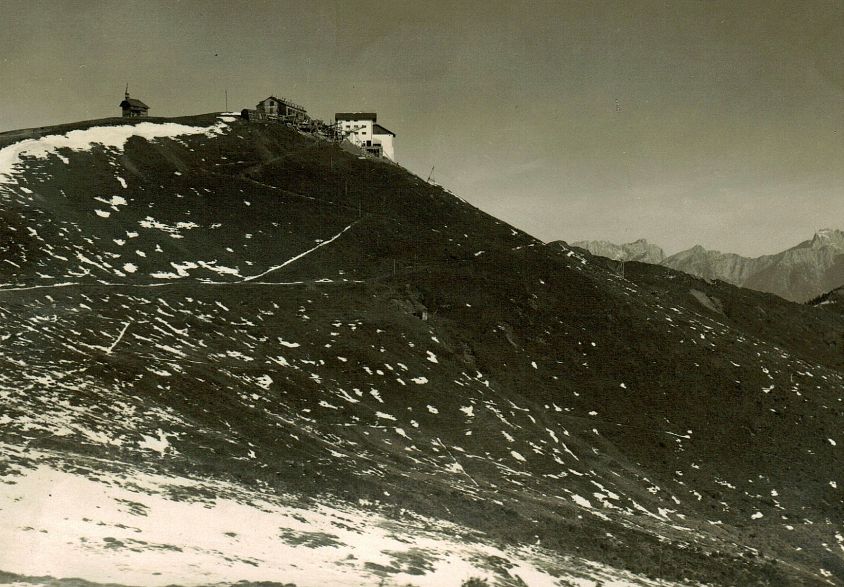Das Berghotel Schmittenhöhe
Ein Ort voller Geschichten und Traditionen
Seit 1874 wird dieser Ort von Reisenden und Abenteurern erobert.
Die Ursprünge des Hotels reichen zurück ins Jahr 1873, als Rudolf Riemann den ersten Weg auf die „Schmidtner-Höhe“ baute, wie sie damals genannt wurde. Ein Weg, der nicht nur Wanderern, sondern auch Abenteurern und Träumern den Gipfel näher brachte.
Der Alpenverein erwarb die kleine Unterstandhütte auf dem Gipfel im Jahr 1874 und verwandelte sie in ein gemütliches Schutzhaus mit 11 Schlafstellen.
Die Geschichte des Berghotels nahm Fahrt auf, als der Großtrafikant Josef Fill im Jahr 1876 das Gasthaus erwarb und zu einem Ort des Komforts und der Gasfreundschaft ausbaute. Die Eheleute Albert und Mathilde Hubinger übernahmen das Hotel im Jahr 1877 und führten es mit Leidenschaft und Hingabe weiter.
Die königliche Präsenz war nicht fern, als Kaiserin Elisabeth (Sissi) im August 1885 die Schmittenhöhe besucht und die majestätische Aussicht genoss. Kaiser Franz I. folgte ihrem Beispiel und verbrachte eine Nacht im Berghotel im Juli 1893.
Die Zeiten änderten sich, als die Schmittenhöhebahn im Dezember 1927 als erste Seilbahn in Salzburg eröffnet wurde, was eine neue Ära des Bergtourismus einläutete.
Doch auch dunkle Tage sollten kommen, als das Hotel während des Zweiten Weltkriegs von der US-Besatzungsmacht beschlagnahmt wurde und als Skiausbildungszentrum diente.
Im Jahr 1955 trat Herr Franz Gramshammer auf die Bühne und erweiterte das Berghotel auf 2000m Höhe zu einem Ort des Luxus und der Erholung. Seine Vision für das Hotel spiegelt sich in jedem Detail wider, während das Hotel in den 1960er Jahren sogar Schauplatz mehrere Heimatfilme wurde.
Eine neue Ära brach an, als Herwig Schiefer im Jahr 1985 Interesse am Berghotel zeigte. Nach erfolgreichen Verhandlungen übernahm er schließlich das Hotel und führte es mit großem Erfolg weiter. Doch selbst in den schwierigsten Zeiten bewies das Berghotel seine Stärke, als im Oktober 2008 ein verheerendes Feuer ausbrach. Mit vereinten Kräften gelang es, das Hotel wieder aufzubauen und neu zu eröffnen – ein Symbol der Widerstandskraft und Gemeinschaftssinn.
Heute steht das Berghotel Schmittenhöhe als Symbol für Gastfreundschaft, Tradition und unvergessliche Erlebnisse in den österreichischen Alpen - eine wahre Legende inmitten der Berglandschaft von Zell am See.
Ein Juwel wie die kleine Almhütte von Franz Gramshammer, das bis heute liebevoll geführt wird und Gäste mit österreichischer Tradition und Kulinarik begeistert.




